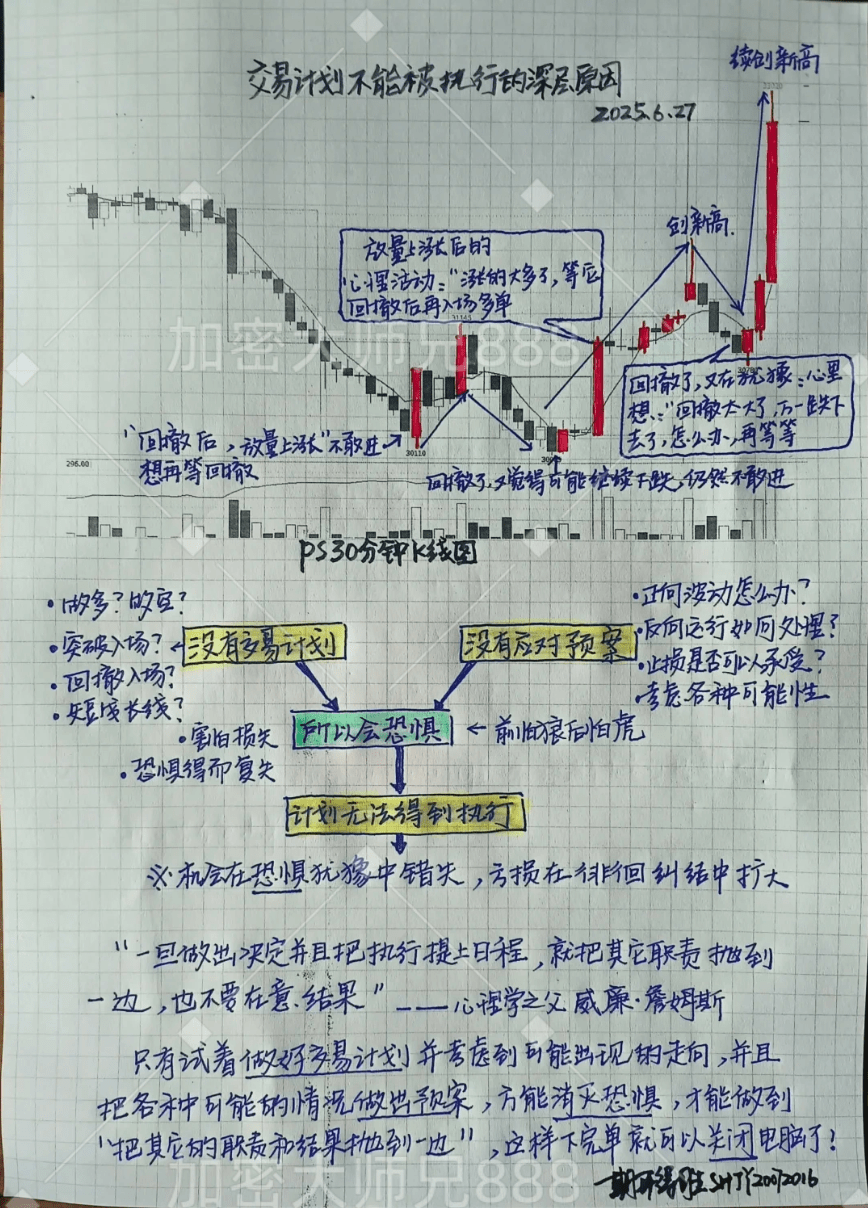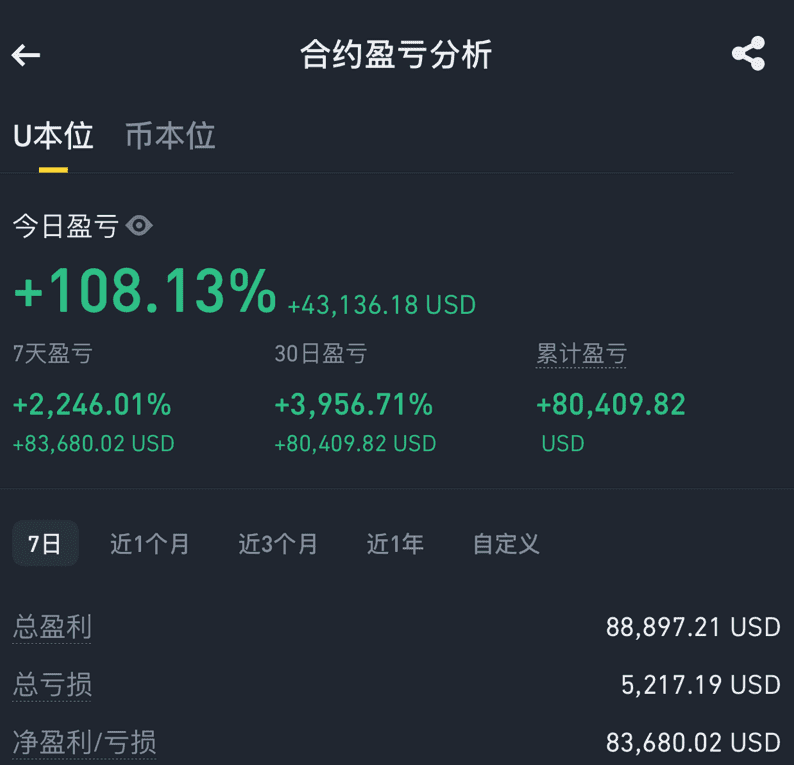Throw away your 1-minute time frame, immediately!
In the crypto market, the K-lines of the 1-minute time frame are mostly dominated by random fluctuations, with 90% being ineffective noise. What you perceive as 'uptrend / downtrend' is likely an illusion created by short-term capital inflows and outflows. Those quantitative trading institutions are harvesting retail investors who frequently trade based on the 1-minute line using algorithms and ultra-low latency.
Solution: At a minimum, switch to a 15-minute time frame and primarily focus on the trend direction of the 4-hour / daily line. Use the 5-minute line only to filter entry points (for example, to determine if a short-term pullback has ended).
Underlying logic: The large cycle determines the bullish or bearish direction (for example, if the daily line is clearly upward, focus on going long), and the small cycle finds suitable entry points. If you go against this, your capital will quickly be swallowed by sharp fluctuations.Stop trying 'trial positions' to test trends; this is slow suicide.
Do you think trial positions in cryptocurrency trading have low costs? Frequent trial and error with 10 stop losses, even if each time you only lose 1%, after 10 times your capital will evaporate by 10% (considering compound losses, it’s even scarier; if you start with $10,000 and lose 1% 10 times, you will end up with only $9043).
Solution:
Only enter when the large cycle trend is clear + the small cycle pullback has ended (for example, if the daily line is in a bullish trend for Bitcoin, go long when the 5-minute line pulls back to a key moving average or does not break the previous high).
Give up 'predicting trend starting points'; only trade the second leg after trend confirmation (for example, enter after Bitcoin breaks through the previous high and pulls back, forming a flag pattern at the end).Stop loss is not 'cut losses when it goes bad', but 'calculate it before entering'.
Your stop loss logic in cryptocurrency trading is mostly flawed: stop loss should not be 'cut when you feel it will fall', but should be based on whether the market structure is broken (for example, if Ethereum falls below recent lows or key support levels).
Must-change action:
Before entering, first find a clear stop loss point, using 1.5-2 times the ATR (Average True Range) as a dynamic stop loss, with a single loss never exceeding 1% of the principal.
Example: For a $10,000 account, the maximum loss per trade is $100. If you buy Ethereum with a stop loss space of $50 (for example, entry price $2000, stop loss at $1950), then the position size = $100/$50 = 2 Ethereum.The core of profit can be summarized in one sentence: 'Cut losses short, let profits run.'
The root of your losses in trading cryptocurrencies: you panic and close positions when you make a few points (for example, you sell Bitcoin when it rises by $500), but you stubbornly hold on when you lose several thousand points (you still hold when it drops by $2000 waiting for a rebound).
Violent Correction Method:
Hold winning trades for at least a risk-reward ratio of 2:1 (for example, if you set a stop loss at $1000, only consider closing when profits exceed $2000).
Trailing Stop: For example, after the price of the purchased cryptocurrency breaks through the previous high, move the stop loss to the breakeven point (no loss of principal), and then use trend lines and moving averages to follow the profit taking (for example, close the position if the price falls below the 20-day moving average).
The brutal truth: Out of 10 trades, if 6 have small losses, 3 break even, and 1 has a big profit, you can survive in the crypto market, but you must resist the impulse to 'take profits quickly'!Immediately focus on one cryptocurrency, one pattern, one strategy.
You lose by wanting to seize every opportunity: you chase Bitcoin when it rises, short Ethereum when it falls, and rush into Solana when it surges, ultimately being harvested as a retail investor by the high volatility of the crypto market.
Extreme Focus Method:
Only trade 1 cryptocurrency with high liquidity and relatively moderate volatility (such as Bitcoin BTC or Ethereum ETH, avoiding low-market-cap altcoins).
Only trade 1 high-probability pattern (for example, a pullback after the price breaks through the previous high, or reversal after a false breakdown of a trend line).
Backtest this pattern 100 times on the cryptocurrency for its win rate and risk-reward ratio, and only trade live after meeting the criteria.Hand-draw and review charts.
Staring at the screen to watch price K-lines is useless; you must actively draw support and resistance levels, trend lines, Fibonacci retracement lines, etc.
Key points of review:
Which positions in the past week were true breakouts (for example, Bitcoin continued to rise after breaking $30,000) / false breakouts (immediately fell back after breaking)?
If your stop loss is placed outside the market structure (for example, below a key support level), can you avoid those sharp declines?
After holding a profitable position, will the final profit cover the losses from multiple trial and error?
The final truth:
Trading cryptocurrencies has no endpoint of 'stable profits', only the process of 'using rules to counter human nature'.
If you are still struggling with 'why you are losing despite learning so many trading techniques', there is only one answer: your discipline does not match your ambition.
Either use code / algorithmic trading to enforce strategies (completely eliminate the emotions of chasing gains and cutting losses), or print your trading plan and stick it next to your screen, and strictly adhere to it even if it means 'cutting your hands'.
If you have no direction, and no time to stay up late watching the market and guessing trends, don't get caught up in whether your buy and sell points are accurate. Only take opportunities with clear trends, hold your hands in a bear market, and hold your positions in a bull market. In the next wave of the market, I will say, let's ride the rhythm together and let profits outperform 90% of retail investors!
Follow me @加密大师兄888 ; only those with strong execution can succeed.
Remember, the crypto market is not short of opportunities; what it lacks is the execution to catch up.

